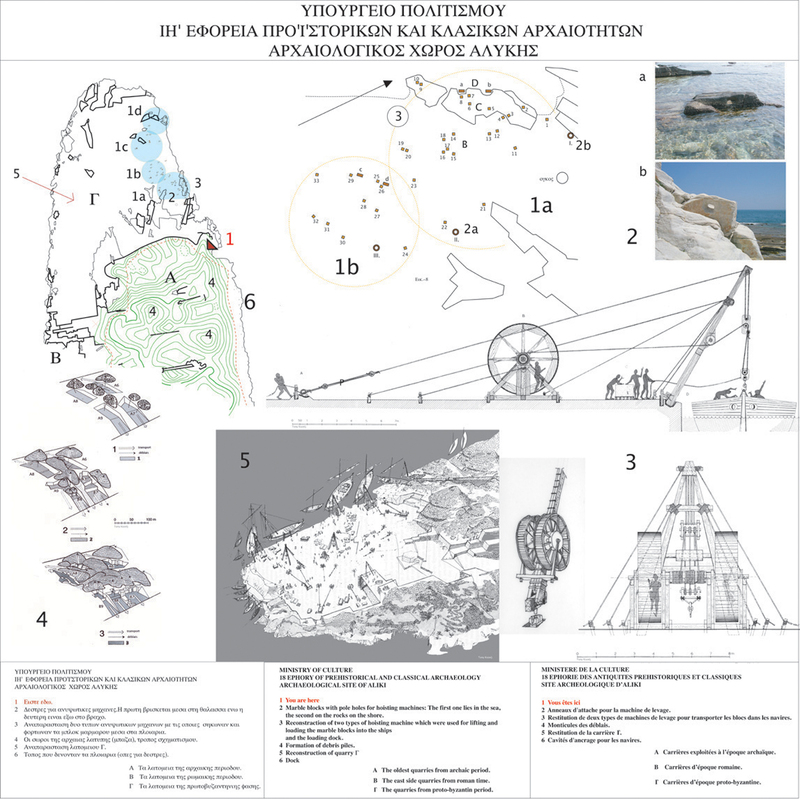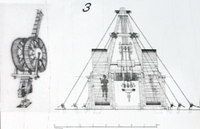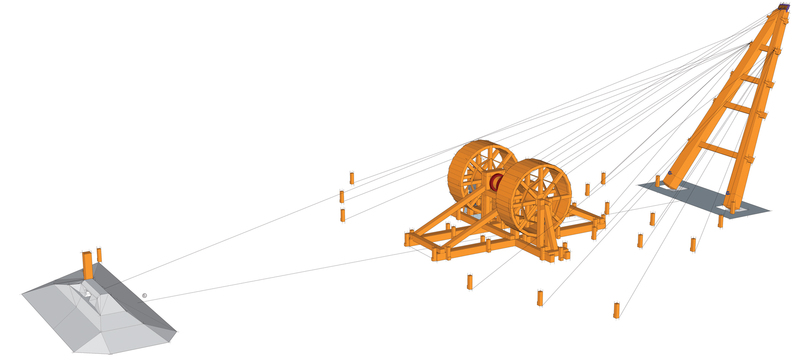Position of sign B. Quarry of Group C. Quarrying techniques, bindings, Counterweights, Cranes


Wherever you look at this place the traces of quarrying activity which starts from the 6th century BC and stops at the 7th century AD, namely for twelve centuries uninterruptedly, are evident. The remains of the ancient quarrying techniques, but also the marks left by the local residents are now scattered in the area. The archaeologists studying the site have described the place as an open museum of ancient art. The area of Alyki supplied all the then known sculpture and architecture workshops in the Greek and later the Roman world. The marbles of Alyki adorn the monuments of the neighboring Samothrace, of Enos, of Athens and many Roman monuments as well, as the historian Plinius says, the Romans had a high regard for the Thassian marble. The tradition continued during the early Christian period, when, around the 7th century, the whole peninsula was abandoned, probably because of the Slavic invasions.
The crane which is represented by the drawing, is the so-called "lifting machine of the human cage." It is about a structure of two wooden beams in “Λ” shape, used for lifting heavy loads. The load was lifted or descended with ropes wrapped around a coil. The coil was linked with at least one radial wheel (cage) in which one or more men walked. In the picture the wheels of the lifting machine are two. Other ropes held the crane stable and controlled the change of inclination. Basic source of information for such machines is the Roman writer Vitruvius and his work: "On Architecture" (De Architectura).
From very early on, since the 3rd millennium BC, man used ramps to be able to lift heavy and bulky stones. In this way, imposing monuments were built, such as the megalithic monuments of prehistoric Europe, the pyramids of Egypt, the walls and the vaulted tombs of the Mycenaean world. However, the big breakthrough occurred in the 6th century BC, by the Greeks, who invented the pulleys, the hoists, the winches and the lifting machines. Modern lifting machines are nothing more than developments of these ancient inventions. The picture shows from the back side, the previous lifting machine with a human cage.







